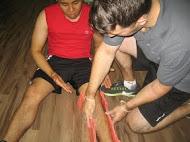Overview Of A Dislocation
- A dislocation happens when the bones that are connected at a joint become detached.
- You can dislocate a range of different joints in your body, as well as your ankle, hip, knee, or shoulder.
- Since a dislocation indicates your bone is no longer in place, you should manage it as a medical emergency and get medical assistance as soon as possible.
- A dislocation that is not treated could cause harm to your nerves, ligaments, or blood vessels.
Causes Of Dislocations

- Dislocations usually occur when a joint experiences a sudden impact.
- This could occur if you fall or experience a severe knock to the affected area.
Symptoms Of Dislocations
Recognizing a Dislocation
- In many instances, you will easily be able to see a dislocation once it has occurred. The area might be inflamed or look bruised.
- You might notice that the area is red or bruised. It might also have an odd shape as a result of the bruising.
Other symptoms:
- Trouble moving;
- Discomfort when moving;
- lack of feeling around the area; and
- Itchy feeling.
Treatment Of Dislocations
Treating Dislocations
- Your GP’s selection of treatment will depend on the joint that you might have dislocated.
- It might also depend on how serious your dislocation is.
- The primary treatment for any dislocation is R.I.C.E. also known as Rest, Ice, Compression, and Elevation.
- In some instances, the dislocated joint may slip back into place by itself after some basic treatment
If the joint doesn’t slip back into place by itself, your GP might use one of the following methods:
- Medication;
- Rehabilitation;
- Manipulation or repositioning.
Related Video On Dislocations
https://www.youtube.com/watch?v=mIY4fYC0vds